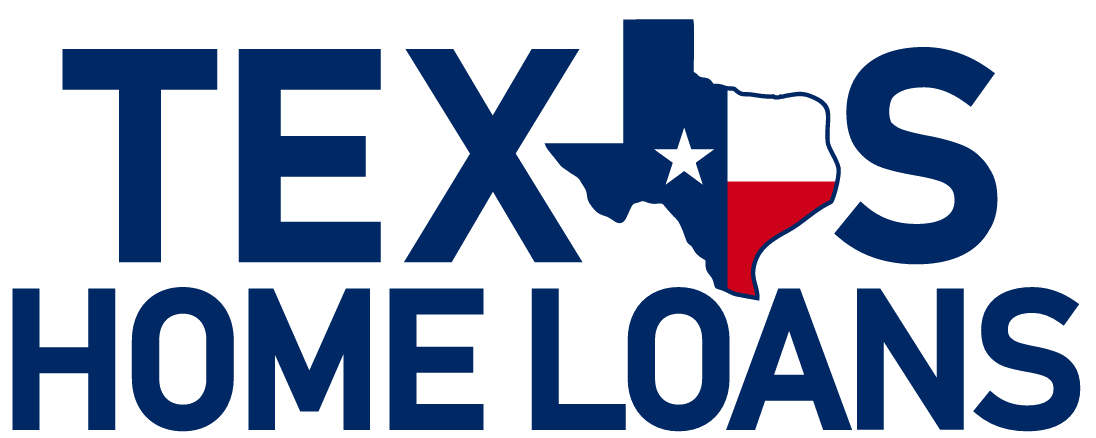Summer Brings More Than Sunshine Summer is one of the busiest seasons for homebuying. With…
Expert Advice: Saving Up for a Down Payment
When buying a home in Texas, knowing about down payments is important. Being prepared helps make the process smooth. Factors like required amounts and credit scores are vital for your financial readiness. Assessing your finances and setting saving goals is key to success. Strategies like budgeting and increasing income can help achieve your down payment goals.

Down Payments in Texas
In Texas, down payments play a crucial role in your home purchase journey. Understanding the typical down payment requirements in Texas is the first step towards realizing your homeownership dream. Your down payment matters as it impacts your monthly mortgage payment, interest rate, and even whether you need to pay private mortgage insurance (PMI). Considering various factors like the purchase price and closing costs can help you determine the optimal down payment amount for your situation. Be prepared by exploring different mortgage loan options and securing a comfortable down payment fund.
Typical Down Payment Requirements
When starting the home buying journey in Texas, understanding typical down payment requirements is crucial. Usually, lenders expect a down payment ranging from 3% to 20% of the home’s purchase price. This initial payment shows your commitment and lowers the amount you need to finance. Higher down payments can result in better loan terms, such as lower interest rates and avoiding private mortgage insurance. Consider your financial situation to determine the right down payment amount for you.
Why Your Down Payment Matters
Your down payment matters significantly when purchasing a home in Texas. It directly impacts your mortgage loan amount, interest rates, and the need for private mortgage insurance. A higher down payment can result in lower monthly payments and overall interest costs. It can also make you a more attractive borrower to mortgage lenders, potentially leading to better loan terms. Therefore, dedicating time to saving for a substantial down payment can positively influence your financial health and long-term homeownership goals. Remember, the more you can put down upfront, the better off you’ll be in the long run.
Review Your Financial Health
Assessing your financial well-being is crucial before embarking on homeownership. Begin by analyzing your existing financial status, including income, expenses, and savings. Understanding your credit score’s impact on mortgage rates and terms is vital. Consult with a loan officer to discuss your financial situation and determine the loan amount you qualify for. Building a strong financial foundation ensures you can comfortably manage monthly payments. Implementing sound personal finance practices sets the stage for a successful home purchase journey.
Explore Your Current Financial Situation
Evaluate your current financial standing to assess readiness for a down payment. Consider factors like your savings, monthly income, and existing debts. This analysis involves scrutinizing your budget, savings goal, and overall financial health to determine the feasibility of affording a home. Understanding your financial situation is crucial before committing to a significant investment like buying a house. Seek clarity on how much you can comfortably allocate towards a down payment and ongoing mortgage payments. This step sets the foundation for a successful home purchase.
Why Credit Scores are Important in Home Buying
Maintaining a healthy credit score is vital in the home buying process. Lenders use this score to assess your creditworthiness, determining the interest rate on your mortgage loan. A higher credit score can mean lower interest rates, saving you money over the life of the loan. It also affects your eligibility for certain loan programs and can impact the total amount you can borrow. Monitoring your credit score regularly and addressing any issues can help you secure a better mortgage deal, making your homeownership journey smoother and more affordable.
Define Your Goals
When preparing for a down payment, it’s crucial to define your goals clearly. Determine how much you need to save and for what type of home purchase. Setting a savings goal will guide your financial efforts and keep you on track. Consider factors like the purchase price, closing costs, and any additional home-buying expenses. Understanding your objectives will help you create a realistic savings plan and choose the right mortgage loan for your future home.
How Much Should You Save for a Down Payment?
To determine how much to save for a down payment in Texas, consider factors like home prices, loan types, and your financial situation. Typically, aim for 5-20% of the home’s value. Setting realistic savings goals and exploring financing options can help you reach your target.
Setting Realistic Savings Milestones
When preparing for a down payment in Texas, setting realistic savings milestones is crucial. Analyze your financial situation to determine how much you can comfortably save each month towards your goal. Utilize a mortgage calculator to estimate your monthly payment based on different down payment amounts. Consider any payment assistance programs or grants available through organizations like the Texas State Affordable Housing Corporation. Create a savings goal that aligns with the required down payment percentage for your desired home purchase. Setting achievable milestones will help you track your progress and stay motivated towards reaching your target down payment amount.
3 Strategies for Saving for a Down Payment in Texas
Saving for a down payment in Texas requires discipline and careful planning. Here are some strategies to help you save for your dream home:
1.) Creating a Budget That Works
One of the first steps in saving for a down payment is creating a budget that works for you. Assess your monthly income, expenses, and debt to determine how much you can realistically save each month. Consider using budgeting apps or spreadsheets to track your spending and identify areas where you can cut back. By prioritizing your savings and sticking to your budget, you can ensure that you are setting aside enough money for your down payment.
2.) Cutting Unnecessary Expenses
Cutting unnecessary expenses is another effective strategy for saving for a down payment. Take a close look at your monthly expenses and identify areas where you can reduce or eliminate unnecessary spending. This could include cutting back on dining out, canceling unused subscriptions, and limiting impulse purchases. Additionally, consider reviewing your credit card statements to identify any recurring charges that can be eliminated. Redirecting these funds towards your down payment savings can help you build up your savings more quickly.
3.) Increasing Your Income Streams
Diversifying income sources can bolster your financial readiness. Consider part-time work, freelance projects, or rental income to boost your revenue. Opting for a side hustle can not only expand your income avenues but also enhance your financial stability. NLP terms like extra cash and additional income opportunities speak to the importance of supplementing your earnings. Exploring varied avenues to increase your income streams aligns with solid financial planning principles and can expedite your journey towards homeownership.
VA Loans: Another Path to Homeownership in Texas
For veterans and active-duty military personnel in Texas, VA loans offer a path to homeownership with favorable terms. These loans are backed by the Department of Veterans Affairs and provide various benefits for eligible borrowers. Let’s explore the benefits of VA loans for Texas veterans and how to qualify for these loans.
Benefits of VA Loans for Texas Veterans
VA loans offer substantial benefits for Texas veterans, allowing them to purchase homes with favorable terms. These loans, guaranteed by the Department of Veterans Affairs, often require no down payment, making homeownership more accessible. VA loans also typically have lower interest rates than conventional loans, resulting in reduced monthly mortgage payments. Additionally, veterans are exempt from paying private mortgage insurance, providing further long-term savings. Eligible veterans can take advantage of these benefits to achieve their homeownership dreams more affordably and securely, thanks to the support and assistance provided through VA loan programs.
How to Qualify for a VA Loan
To qualify for a VA loan, which is a type of mortgage backed by the U.S. Department of Veterans Affairs, you need to meet certain eligibility criteria. Typically, veterans, active-duty service members, reservists, and some spouses may qualify for a VA loan. One of the key requirements is obtaining a Certificate of Eligibility, which proves your VA loan entitlement. Additionally, your credit score and debt-to-income ratio will be considered during the application process. VA loans often come with more flexible terms and lower interest rates than conventional loans, making them an attractive option for eligible individuals looking to purchase a home. Be sure to consult with a loan officer experienced in VA loans to guide you through the qualification process.
Alternative Financing Options
In addition to VA loans, there are other alternative financing options available for homebuyers in Texas. Let’s explore FHA and USDA loans, which offer favorable terms for eligible borrowers.
Exploring FHA and USDA Loans
When considering home financing options in Texas, exploring FHA and USDA loans can be advantageous. The Federal Housing Administration (FHA) and the U.S. Department of Agriculture (USDA) offer attractive loan programs with low down payment requirements, making homeownership more accessible. FHA loans are backed by the government, allowing for lower credit score requirements and down payments as low as 3.5%. On the other hand, USDA loans cater to rural homebuyers and offer zero down payment options. Understanding the nuances of each loan type, including eligibility criteria and benefits, can help you make informed decisions tailored to your financial objectives. Utilizing these specialized loan programs can be a strategic approach to achieving your homeownership goals in Texas.
Down Payment Assistance Programs in Texas
Down payment assistance programs can provide additional financial support for first-time homebuyers in Texas. Let’s explore the grants and programs available and navigate the application process.
Grants and Programs for Texas Homebuyers
Texas offers various grants and programs for homebuyers to facilitate the purchasing process. The Texas State Affordable Housing Corporation and the National Association of Realtors® are valuable resources to explore for available options. Programs such as those offered by the Federal Housing Administration and private mortgage insurance providers can assist with down payments and monthly mortgage payments. Understanding these programs can significantly benefit first-time buyers. Navigating through these opportunities can ease the financial burden associated with buying a home in Texas. Ensure to review all eligibility criteria and documentation requirements when considering these grants and programs.
Navigating the Application Process
To smoothly navigate the application process for down payment assistance programs in Texas, start by researching options offered by organizations like the Texas State Affordable Housing Corporation. Understanding the requirements from programs under the National Association of Realtors can also be beneficial. Be prepared to provide essential financial information and documentation for review. Additionally, familiarize yourself with procedures set by the Federal Housing Administration for such applications and ensure you meet the necessary criteria. Seeking guidance from mortgage lenders experienced in facilitating payment assistance programs can streamline the process and increase the chances of a successful application. Properly following the outlined steps can help you navigate the complexities of the application process and secure the needed assistance efficiently.
Preparing for Additional Home-Buying Costs
While saving for a down payment is a crucial step in the homebuying process, it’s important to remember that there are additional costs to consider. Closing costs and other expenses can add up quickly, so it’s essential to budget for these expenses as well. By understanding and preparing for these costs, you can ensure a smooth and successful home purchase.
Closing Costs and Other Expenses
Closing costs and other expenses can significantly impact your homebuying budget in Texas. These costs typically include fees for loan processing, appraisal, title insurance, and attorney services. Additionally, you may need to budget for home inspections, property taxes, and homeowner’s insurance. It’s essential to factor in these expenses to avoid any financial surprises during the closing process. Consider consulting with a loan officer or real estate agent to get a clear breakdown of all potential costs involved in purchasing a home in Texas. Being prepared for these additional expenses will ensure a smoother and more financially sound homebuying experience.
Saving Beyond the Down Payment
Once you’ve secured funds for your down payment, it’s vital to consider saving beyond this initial amount. Having extra savings safeguards you against unforeseen expenses that may arise during the home buying process or once you’ve moved in. This additional cushion can cover unexpected repairs, maintenance costs, or any fluctuations in your financial situation. By building a robust savings account, you create a safety net for your new investment, ensuring that you can comfortably manage any unexpected financial challenges that come your way. Consider setting up a separate savings account dedicated to homeownership expenses to easily track and allocate funds for future needs.
Frequently Asked Questions
What are some common mistakes to avoid when saving for a down payment on a home in Texas?
A common mistake to avoid is making early withdrawals from your retirement accounts or other long-term investments to fund your down payment. This can have negative tax consequences and may leave you with insufficient funds for your future. Instead, focus on building your savings through a dedicated checking account or high-yield savings account.
What are some tips for saving for a down payment on a home in Texas?
Some tips for saving for a down payment on a home in Texas include setting up a separate savings account specifically for your down payment savings, creating a savings goal based on how much house you can afford, and regularly contributing to your savings fund. It’s important to be disciplined and stick to your savings plan to reach your goal.
Is a 20% Down Payment Always Necessary?
No, a 20% down payment is not always necessary. While a larger down payment can help lower your monthly mortgage payment and avoid private mortgage insurance (PMI), there are loan programs available that allow for smaller down payments. It’s important to explore your mortgage options and choose a loan program that best suits your financial situation and purchase price.
Conclusion
Getting ready for a down payment in Texas means planning your finances and setting goals. Knowing how important your down payment is and looking into different ways to finance, like VA loans (if eligible) , can help you buy a home. Check your money situation, set achievable savings goals, and think about programs that can help with the down payment. Listen to advice, save smartly, and you’ll be able to buy a house in Texas confidently. Stay updated, concentrate, and work towards owning your own Texas home.





